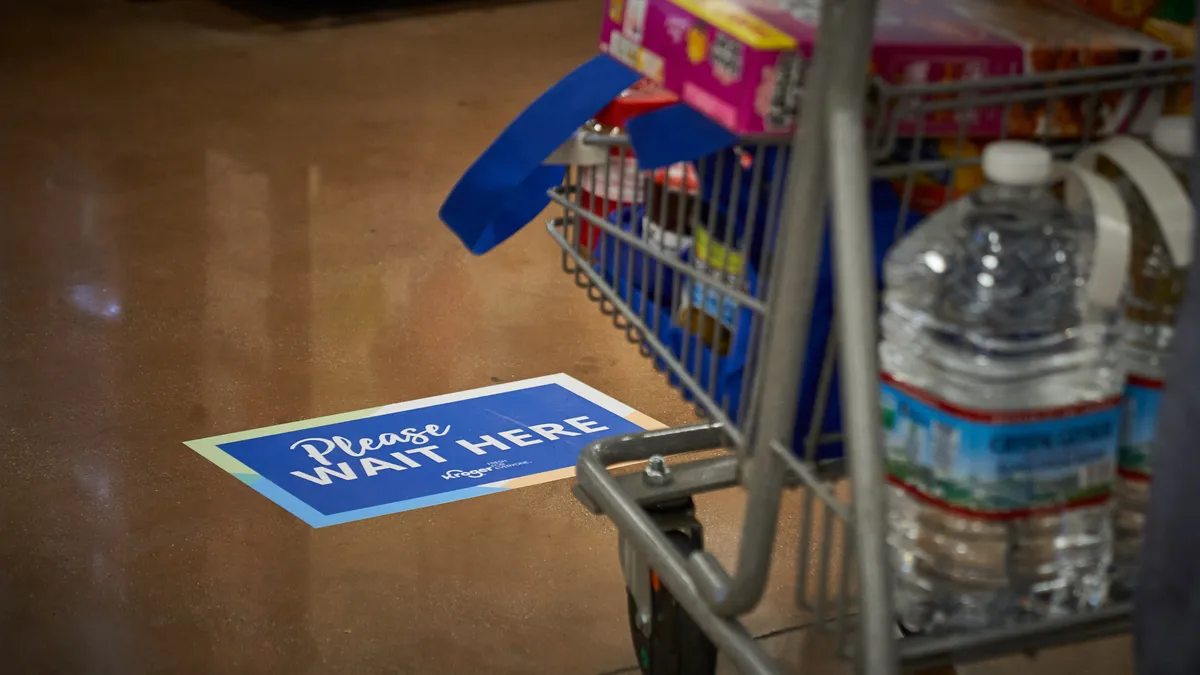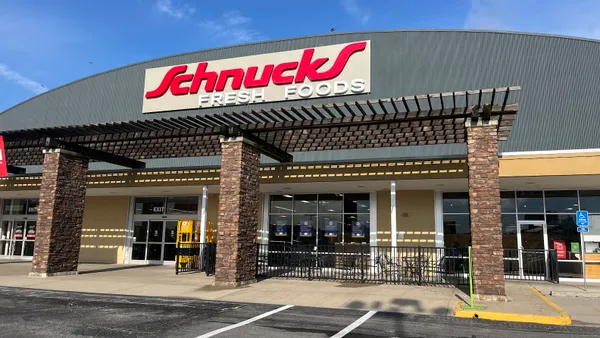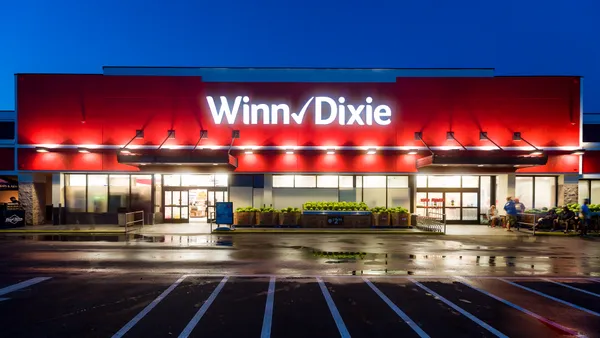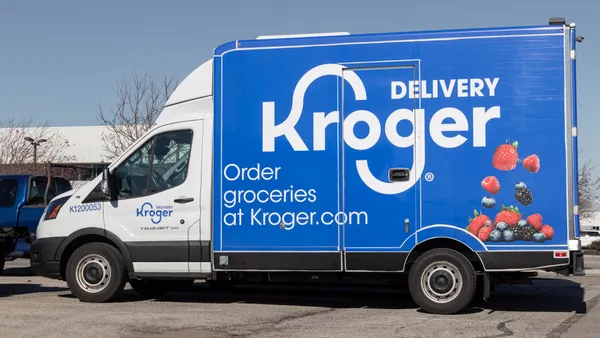Dive Brief:
- The food retail industry has poured approximately $24 billion into pandemic-related expenses like safety measures, new technology and employee compensation since last March, according to a new report by the Food Industry Association (FMI). The trade association surveyed 52 companies, which represent 14,000 stores and roughly 42% of the food retailing industry, between Feb. 24 and March 15, 2021.
- Increases in payroll and incentive pay accounted for half ($12 billion) of the added costs, which took a bigger toll on smaller companies. Retailers with fewer than 10 stores spent more than twice as much ($50,000) than larger retailers ($24,000) on safety-related expenses per store, per the findings.
- Survey respondents said that their profits increased to 2.5% — a 1.4 percentage point bump from 2019 — during the pandemic. Most grocers are expecting profits to decline in 2021 as pandemic-related costs continue and shoppers rely less on at-home cooking, the report found.
Dive Insight:
Even though grocers saw skyrocketing sales in the past year, additional costs have been chipping away at profits in the low-margin industry.
FMI found that sales increased 11% in 2020, to $1 trillion, which was $100 billion more than retailers recorded in 2019. After factoring in the cost of goods sold along with pandemic-related expenses, the industry's profit gain over 2019 was $6 billion.
That gain, while significant, isn't as large as some might imagine, said Sarasin. Grocers have faced criticism from consumers and unions for dropping hazard pay and for fighting local ordinances to increase hourly pay by as much as $4 an hour.
“The results of the survey indicate that a majority of America's grocers didn't have exceedingly large net profits in 2020, as some have hypothesized," Leslie Sarasin, president and CEO of FMI, said at a virtual press conference.
When determining pandemic expenses, FMI factored in hazard pay, vaccine incentives, increased cleaning and sanitation, personal protective equipment (PPE) purchases, investments in e-commerce and boosted benefits and payroll. According to FMI, grocers spent almost $110 million on Plexiglass, more than $225 million on masks, $20 million on safety messaging, $65 million on hand sanitizer and $160 million on gloves.

Sarasin said she was surprised by the survey’s findings that smaller retailers spent double the amount on pandemic-related expenses compared to larger retailers.
“Because the demand was so high, and the demand so great, throughout the country [for health and safety supplies], I think the smaller retailers just weren't able to get them at scale and at a price point that some of the larger ones could,” Sarasin said, adding that it is easier now for smaller retailers to access affordable PPE as production has ramped up.
Earlier this month, the National Grocers Association (NGA) claimed that large retailers' anti-competitive practices are leading to economic discrimination against independent grocers. The NGA and the Association of Wholesale Grocers are calling on Congress to update and enforce antitrust laws.
Sarasin said that FMI did not analyze short- and long-term pandemic-induced expenses and that the trade association does not have data on how online transactions impact grocers’ profitability versus in-store purchases.
Looking ahead to the rest of 2021, more than half of the survey respondents predicted that sales and profits will decrease. Changing shopper habits, public health regulations, increased opportunities to buy food at restaurants and continued pandemic-related expenses, which are expected to continue through late 2021, are expected to negatively impact grocers’ bottom lines, Sarasin said.
“I think it's fair to say that, while we're beginning to see some light at the end of the tunnel, we know we still have a long way to go,” she said.










